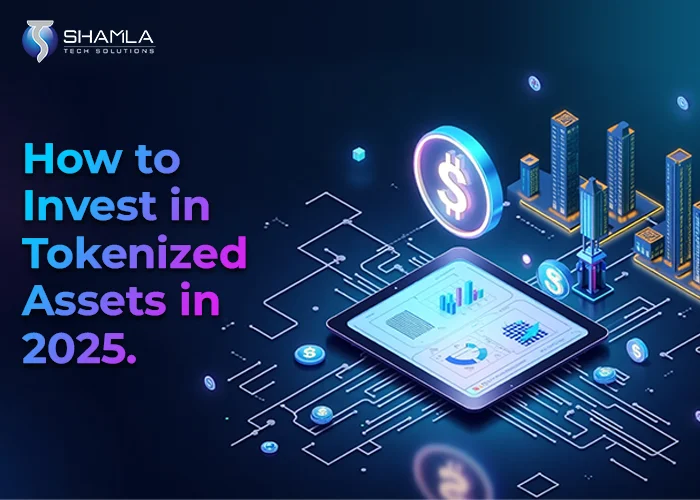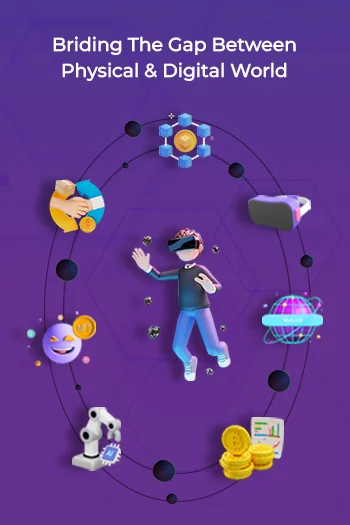Why Are Tokenized Assets Gaining Traction in 2025?
Key drivers for the surge in tokenization in 2025:
Tokenization removes obstacles to entrance by use of tokenization, hence enabling everyone to invest with little money, so learn how to invest in tokenized assets today. You can own a fraction via tokens; you no longer have to purchase a full ounce of gold or an entire home.
Blockchain removes middlemen and hence allows cross-border transactions, so allowing investors all around to access new markets.
Digital marketplaces allow traditionally illiquid assets like real estate or fine art to be traded 24/7, hence offering immediate liquidity.
Drawn by blockchain’s openness and security, financial institutions are starting tokenized funds and platforms.
Efficiency: Smart contracts automate settlements, reduce paperwork, and cut costs.
Core Idea of Tokenization
Fundamentally, tokenization is the technique of transforming ownership rights in an asset—physical or digital—into digital tokens on a blockchain. Learn how to invest in tokenized assets to do it well without any loss. Every token is a transferable, programmable unit representing a share of the underlying asset. This development makes it possible:
Investors may acquire little sections of high-value assets under fractional ownership.
Smart contracts control regulations, payments, and compliance in programmable assets.
Tokens can be purchased and sold anywhere, anytime.
Tokenization is a basic rethinking of how value is produced, moved, and accessed in the digital era, not only a technical change.
Benefits You Get from Tokenizing Assets
1. Reduce Entry Barriers
2. Greater liquidity
3. Worldwide Access
4. Reduced Costs and Quick Settlement
5. Increased security and openness
6. Portfolio Diversification
7. Value and Capital Formation Unlocked
8. Trading in Secondary Markets
9. Regulatory and Compliance Benefits
Benefits of Tokenization in Real-World Assets
Real estate investment is becoming more democratic and efficient thanks to fractional ownership, worldwide access, and quick liquidity. Let’s discuss the benefits of tokenization in real-world assets and also how to invest in tokenized assets
Tokenized oil, silver, and gold let investors possess fractions without physical storage or documentation.
Tokenization allows co-ownership and trade of high-value art, hence opening the market to more individuals.
Smaller investment tickets and possible secondary markets for fund shares.
By issuing and trading bonds, derivatives, and structured goods as tokens, financial instruments can be traded and issued, hence lowering settlement times and expenses.
Asset Tokenization Platform Benefit Investors
The foundation of this modern investment is asset tokenization platforms and asset tokenization platform benefit investors.
Easy-to-use tools for purchasing, selling, and controlling tokenized assets.
Included KYC/AML audits and compliance.
Dividends, interest, and governance smart contract automation.
Liquidity via secondary market access.
Worldwide reach and compatibility among blockchains.
These platforms are enabling participation in tokenized markets for both retail and institutional investors more than before.
Benefits of Real Estate Tokenization
In 2025, real estate is spearheading the tokenization movement. There are multiple Benefits of real estate tokenization if you learn How to invest in tokenized assets?
Investors can purchase tiny portions of high-value assets, therefore reducing the entrance barrier.
Unlike conventional real estate, properties can be traded on secondary markets, hence offering quick liquidity.
Investors all over may engage in real estate markets free of complicated legal procedures.
Smart contracts manage compliance, dividend distribution, and rent collection, hence lowering administrative expenses.
Blockchain records provide obvious ownership and transaction history, therefore lowering fraud.
Benefits of Token Development
Benefits of token development are numerous, let’s discuss it briefly
Tokens can be programmed for compliance, voting rights, or dividends.
Tokens can be made to operate across several blockchains, hence expanding market reach.
Tokens built on blockchain are safe and tamper-proof.
Automated systems cut expenses and eliminate the need for middlemen.
Tokenized assets provide a foundation for new financial products and services.
Trading Tokenized Assets: Opportunities for 2025
1. Low-Capital Entrance
2. Arbitrage
3. Yield-Generating Tokens
4. 24/7 Trading
5. Global Participation
The Future of Asset Tokenization
How to Invest in Tokenized Assets in 2025?
1. Select a Reliable Asset Tokenization Platform
2. Finish KYC/AML Checks
3. Finance Your Account
4. Look at Accessible Tokenized Assets
5. Buy Fractional Shares
6. Trade and Manage Your Tokens
Important Assets for Tokenization in 2025
Real Estate
One of the most important changes in the digital economy is real estate tokenization. Investing in conventional real estate calls for significant money and includes complicated legal processes. How to invest in tokenized assets addresses these problems by allowing fractional ownership, hence enabling small investors access to high-value properties.
Asset tokenization development lets properties be split into digital tokens signifying ownership share. Traded on secondary markets, these tokens boost liquidity and lower entry barriers. More commercial and residential properties will be tokenized in 2025, hence allowing investors from all over the world to possess a portion of premium real estate assets.
Smart contracts also simplify property deals by cutting down on paperwork, removing middlemen, and hastening the process. Institutional investors are drawn by this efficiency, which makes real estate tokenization among the most exciting fields for digital asset transformation.
Equities and Stocks
Traditionally exchanged on stock exchanges, equities and corporate shares have been transformed by blockchain technology. Without middlemen, How to invest in tokenized assets and asset tokenization solution providers are helping businesses to create tokenized shares that can be exchanged 24/7 on decentralized exchanges.
This change will provide investors more access, lower transaction fees, and real-time settlements. By issuing tokenized stock, companies—especially startups and small enterprises—will gain from new fundraising possibilities, therefore democratizing capital markets.
Allowing companies to acquire money in a more efficient and affordable way, security token offerings (STOs) are turning into a feasible substitute for conventional IPOs. Tokenized equities will grow more prevalent as rules change, hence supporting a worldwide investment environment with fewer constraints.
Art and Collectibles
High pricing and authentication issues have historically kept the art and collectibles sector exclusive to select purchasers. But tokenization is changing the game by letting historical objects, rare treasures, and artworks be split into digital shares.
By allowing more involvement in the art market, asset tokenization services let several investors co-own precious works of art. Tokenized art will be a common investment by 2025; blockchain will guarantee the authenticity and provenance of every item.
This development is also enabling authors and artists to obtain just pay for their labor. Creators can create continuous income via NFTs and fractional ownership; by means of royalty systems built into smart contracts, they can even gain from secondary sales.
Commodities (Gold, Silver, Oil)
Tokenization of commodities, including gold, silver, and oil, is anticipated to pick up speed in 2025, expedite the process of learning how to Invest in Tokenized Assets Traditionally, investment in commodities called for either paper-based certificates or physical storage concerns. Investors can hold commodity fractions via blockchain-based tokenization without physical handling.
This benefit of asset tokenization and learning how to Invest in Tokenized Assets makes commodity markets more open, safe, and accessible. Asset tokenization development company solutions allow smooth transactions and reduced investment minimums, drawing a larger spectrum of investors to the commodities sector.
Tokenized gold, for example, can be traded digitally and kept in vaults, therefore removing worries about theft and loss. Smart contracts guarantee smooth ownership transfers as well, thus appealing to commodities for today’s investors.
Intellectual Property and Royalties
IP tokenization lets creators profit from their work in creative ways. Musicians, writers, and other content producers can tokenize their copyright, patent, and license rights, hence enabling fans and investors to buy a piece of future income sources.
Content producers can get direct financing from their audience by using Asset Tokenization Development, therefore preserving sovereignty over their work. This approach guarantees that artists are fairly compensated for their intellectual property by eliminating middlemen.
By guaranteeing that ownership rights are securely preserved, blockchain technology helps to lower the danger of IP theft and plagiarism. By means of royalties, investors can generate passive income while more equitably and decentralizedly supporting creative sectors.
Infrastructure Projects
Massive capital investments are needed for large-scale infrastructure projects such as highways, bridges, and renewable energy farms. Tokenization lets a bigger pool of investors fund these initiatives, hence lessening dependence on conventional financial institutions.
Investors can purchase digital shares in infrastructure projects using Asset Tokenization Solution integration, therefore gaining long-term returns. Faster construction of global infrastructure projects made possible by this democratized investing strategy would help communities all over.
To fund vital infrastructure, governments and private corporations are already looking at blockchain-based public-private partnerships (PPPs), therefore lowering corruption and inefficiency and enhancing responsibility.
Luxury Goods and Lifestyle Assets
Tokenization is spreading into the luxury goods sector, from luxury watches to vintage autos and designer handbags. Many people find owning a high-end collectible to be unattainable; however, fractional ownership via tokenization helps to make luxury items more reachable.
Investors in tokenized luxury items can exchange their shares, therefore profiting from asset appreciation and retaining flexibility. Asset tokenization development services help to lower luxury market fraud by guaranteeing ownership data are safe, open, and verifiable.
Conclusion
Learning how to invest in tokenized assets in 2025 is no longer a question for the future; rather, it is a reality now. Asset tokenization’s advantages—accessibility, liquidity, efficiency, and transparency—are changing our investment approach in Real World Asset Tokenization Development. The possibilities are great and expanding, whether your focus is on the advantages of tokenization in real-world assets, the benefits of asset tokenization platforms, or the particular advantages of real estate tokenization.
Like with any investment, knowing the hazards and doing your due research is essential. Tokenized assets provide a strong new means to create wealth, diversify portfolios, and engage in the worldwide economy for those who are willing to accept the future, but Start looking at tokenized assets now to help the financial revolution of 2025.



